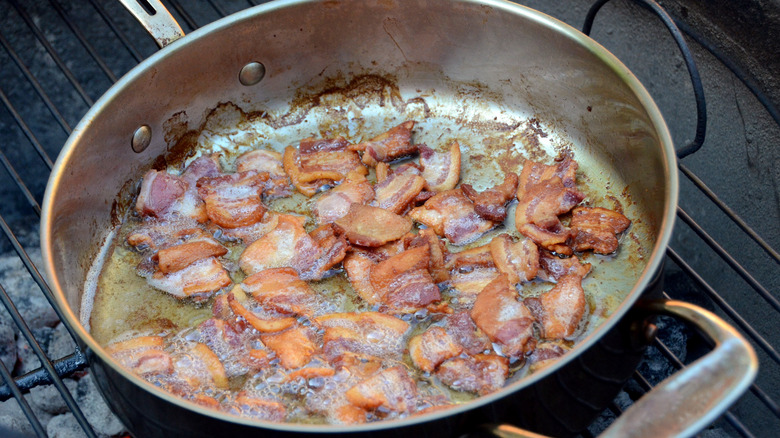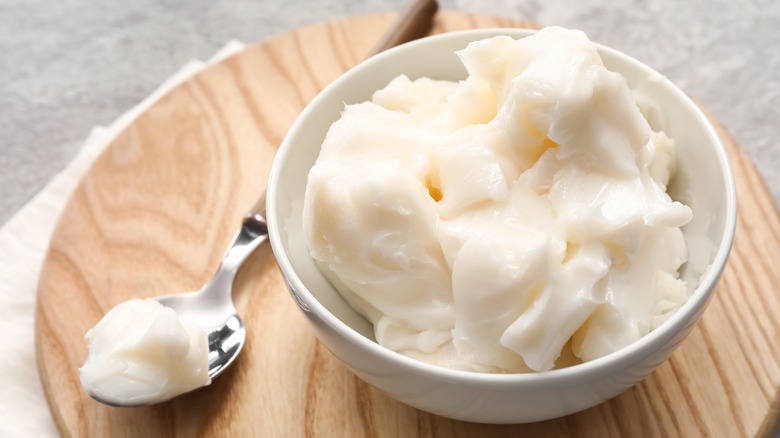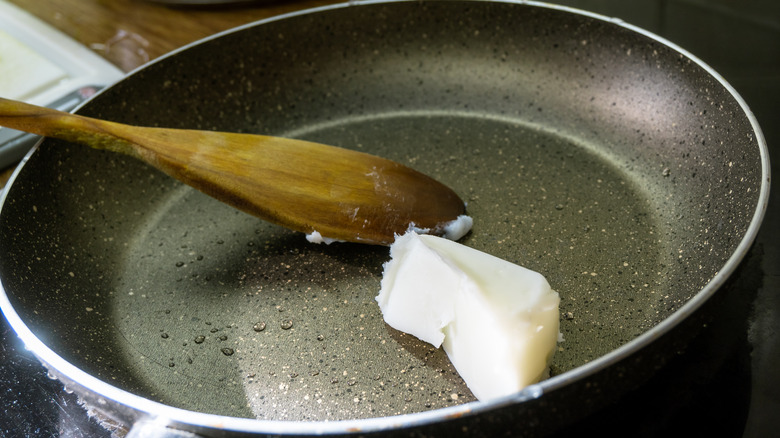The Best Bacon Grease Substitute When You're In A Pinch
Smokey, umami-rich bacon is a gift that keeps on giving. The meat adds flavor and texture to recipes or is enjoyed on its own, improving any breakfast or lunch sandwich. When the meat is gone, the savory fat left over can (and should be) used to flavor additional meals.
Bacon grease is the byproduct of slowly rendering the fat from bacon. 'Liquid gold' imparts the essence of bacon (salty and smokey) when you don't have the meat. This cooking oil can be used in place of other fats without adjusting the recipe.
Prized by Southerners for generations, bacon grease is used in baking, sautéing, and pan-frying recipes when you want to add more depth to the dish. However, if bacon grease is unavailable, it can be substituted with fresh lard in a pinch. Both fats come from pork and can be used interchangeably, though with a notable difference in taste.
Bacon grease, unlike lard, has a characteristically intense smoky flavor that transfers to the dishes in which it's used. Quality lard is more versatile. It's neutral-tasting and won't influence how the dish tastes. It is primarily used for texture in baking and cooking. To mimic bacon grease more closely, liquid smoke can be added.
The two types of lard
There are two types of lard commonly sold. Fresh leaf lard is kept refrigerated and is strained rendered pork fat. In contrast, processed lard is found at room temperature on supermarket shelves and has been refined and hydrogenated to keep it shelf-stable, like shortening.
Fresh lard can be found in international grocery stores as it is commonly used in Chinese, Latin American, Mexican, and European cuisine; however, it can also be purchased from the butcher. Ask your butcher for fresh leaf lard or back fat, which you can render and strain at home into lard. With the increased interest in sustainability, lard is marketed as a "nose-to-tale" fat, making good use of what would otherwise go to waste. There is a wide selection of merchants available online who offer artisanal lard.
Like bacon grease, lard was historically often kept near the stove so it was easily accessible. However, pork fat can turn rancid quickly, so this isn't a good idea for long-term preservation. Store animal fats in an airtight container in the refrigerator. Lard has a longer shelf life than bacon grease and can be stored for up to one year.
Cooking with lard
Since it lacks the intense flavor of bacon, lard is primarily used when baking and deep frying. Lard produces superior results in pastry. Its high fat content shortens flour's gluten strands by coating them, creating a more tender baked good.
It can replace butter one-for-one in pastry recipes. However, since it lacks flavor, to create a flakier dough with the delicious taste of butter, some recipes recommend a combination of the two fats. Southern bakers like to use lard when preparing biscuits. Lard melts quicker than butter, releasing air and moisture into the dough, causing it to rise higher during baking for a flakey texture ideal for pie crust. Its good plasticity means it's less temperamental to work with than butter, which is invaluable if you're trying to bake in a hot kitchen.
With a smoking point of 370 degrees Fahrenheit, lard can be used for frying without fear of burning the dish. The white semi-solid fat melts clear. Food browns quicker when cooked with lard, which makes it a preferred fat for everything from fried chicken and donuts to roast vegetables.



